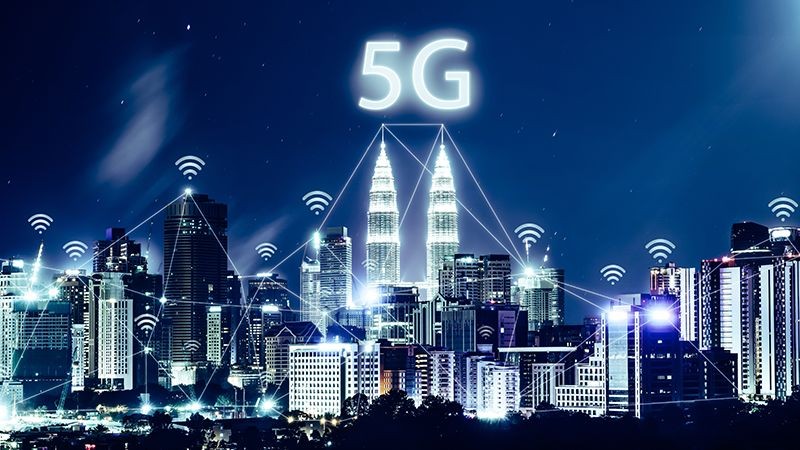Introduction: A New Era of Connectivity and Urban Intelligence
The rapid development of 5G technology is not just about faster mobile internet — it is fundamentally transforming the way cities operate and evolve. As we progress through 2025, smart cities powered by 5G connectivity are reshaping the future of urban living. These interconnected urban environments utilize data, automation, and digital infrastructure to improve efficiency, reduce environmental impact, and enhance the quality of life for citizens.
In this article, we will explore how 5G enables smart city ecosystems, its applications in key sectors, the challenges of implementation, and what the future holds for next-generation urban environments.
What Makes a City “Smart”?
A smart city integrates technology, sensors, and data analytics into everyday urban functions — from traffic control to public safety. Its foundation lies in the Internet of Things (IoT), where millions of devices exchange real-time information.
Core Elements of a Smart City:
- Digital infrastructure: High-speed internet, cloud services, and secure networks.
- Intelligent transportation: Smart traffic lights, autonomous vehicles, and real-time transit systems.
- Energy efficiency: Smart grids, renewable integration, and intelligent lighting.
- Public safety: Surveillance systems, emergency response, and predictive policing.
- Citizen engagement: Apps and platforms for services, feedback, and governance.
Without fast, low-latency, and scalable connectivity, these systems can’t function seamlessly — and that’s where 5G becomes essential.
The Role of 5G in Building Smart Cities
5G networks offer speeds up to 100x faster than 4G, with ultra-low latency (less than 1ms) and the capacity to connect millions of devices per square kilometer. This makes it possible to deploy dense networks of sensors, cameras, and connected infrastructure throughout urban areas.
Key Advantages of 5G for Smart Cities:
- Real-time data processing: Instantaneous decision-making for traffic, emergencies, and utilities.
- Massive IoT support: From smart bins to pollution sensors, all connected and responsive.
- Edge computing: Data processing closer to the source reduces congestion and improves response time.
- Reliability and security: Essential for critical services like healthcare and law enforcement.
With 5G, smart cities can transition from reactive to proactive and predictive systems, improving safety, sustainability, and service delivery.
Real-World Applications of 5G in Urban Life
1. Smart Transportation
5G supports autonomous vehicles (AVs), connected traffic lights, and real-time navigation systems. Cities like Tokyo and Seoul use 5G to manage vehicle flows, reduce congestion, and ensure safety through vehicle-to-infrastructure (V2I) communication.
2. Public Safety and Surveillance
Advanced surveillance systems powered by AI and 5G enable facial recognition, threat detection, and instant alerts. Emergency services benefit from real-time coordination and live-streaming capabilities.
3. Energy and Utilities
Smart meters and grids use 5G to monitor consumption, detect faults, and balance loads. Lighting systems automatically adjust brightness based on motion and daylight, reducing energy costs.
4. Healthcare Access
Telemedicine thrives on 5G’s high bandwidth and low latency. Mobile clinics, wearable health monitors, and ambulance diagnostics improve healthcare delivery, especially in dense or underserved areas.
5. Waste Management
IoT-enabled bins notify waste collection services when they’re full, optimizing routes and reducing fuel usage. Environmental sensors detect air and water quality, helping cities address pollution in real-time.
Cities Leading the Smart Revolution
Several cities have already integrated 5G into their smart city frameworks, setting examples for the rest of the world:
- Singapore: Utilizes 5G for autonomous buses, smart buildings, and AI traffic management.
- Barcelona: Has implemented smart lighting, waste systems, and environmental monitoring through connected IoT devices.
- Dubai: Offers blockchain-based governance and 5G-enabled city services via the “Smart Dubai” initiative.
- New York City: Leveraging 5G to upgrade public Wi-Fi infrastructure, connected transit, and emergency systems.
Each of these cities demonstrates how 5G can scale urban efficiency, responsiveness, and innovation.
Challenges to 5G-Driven Smart City Development
Despite the promise, building smart cities with 5G faces several challenges:
- Infrastructure investment: Deploying 5G requires thousands of small cell towers and fiber backhaul, which is expensive and time-consuming.
- Privacy concerns: Real-time surveillance and data collection raise ethical questions about citizen monitoring and consent.
- Cybersecurity threats: The more connected a city is, the more vulnerable it becomes to hacking, data breaches, and service disruptions.
- Digital divide: Equitable access to 5G and smart services is a concern in lower-income or rural communities.
- Regulatory hurdles: Governments must balance innovation with policy frameworks that ensure public safety and data rights.
To overcome these, governments and tech companies must collaborate on scalable, inclusive, and ethical smart city strategies.
The Future Outlook for Smart Cities in a 5G World
As 5G networks mature and become widespread, the possibilities for smart city innovation will multiply. Some anticipated trends for 2025 and beyond include:
- Digital twins: Cities will use real-time digital replicas of infrastructure to simulate and manage traffic, construction, and emergency scenarios.
- Connected drones: Delivery and monitoring drones will operate in city airspace for tasks like surveillance, inspection, or transport.
- AI-powered governance: Public services will increasingly rely on predictive analytics to address citizen needs proactively.
- Sustainable urbanism: Smart grids, green buildings, and electric mobility solutions will reduce emissions and promote eco-living.
In this future, cities won’t just be places to live — they will be intelligent, adaptive ecosystems that respond to human needs in real time.
Conclusion: 5G Is the Key to Smarter, Safer, and More Efficient Cities
5G is more than just a telecom upgrade — it is the backbone of digital transformation in urban spaces. With 5G-enabled infrastructure, smart cities can deliver better transportation, cleaner environments, more efficient energy use, safer neighborhoods, and more responsive services.
As we enter an age of urban intelligence, cities that embrace 5G and smart technologies will set the standard for innovation, sustainability, and quality of life. The fusion of 5G and smart city planning marks the beginning of a new chapter in how we build and experience the world’s most advanced urban environments.



